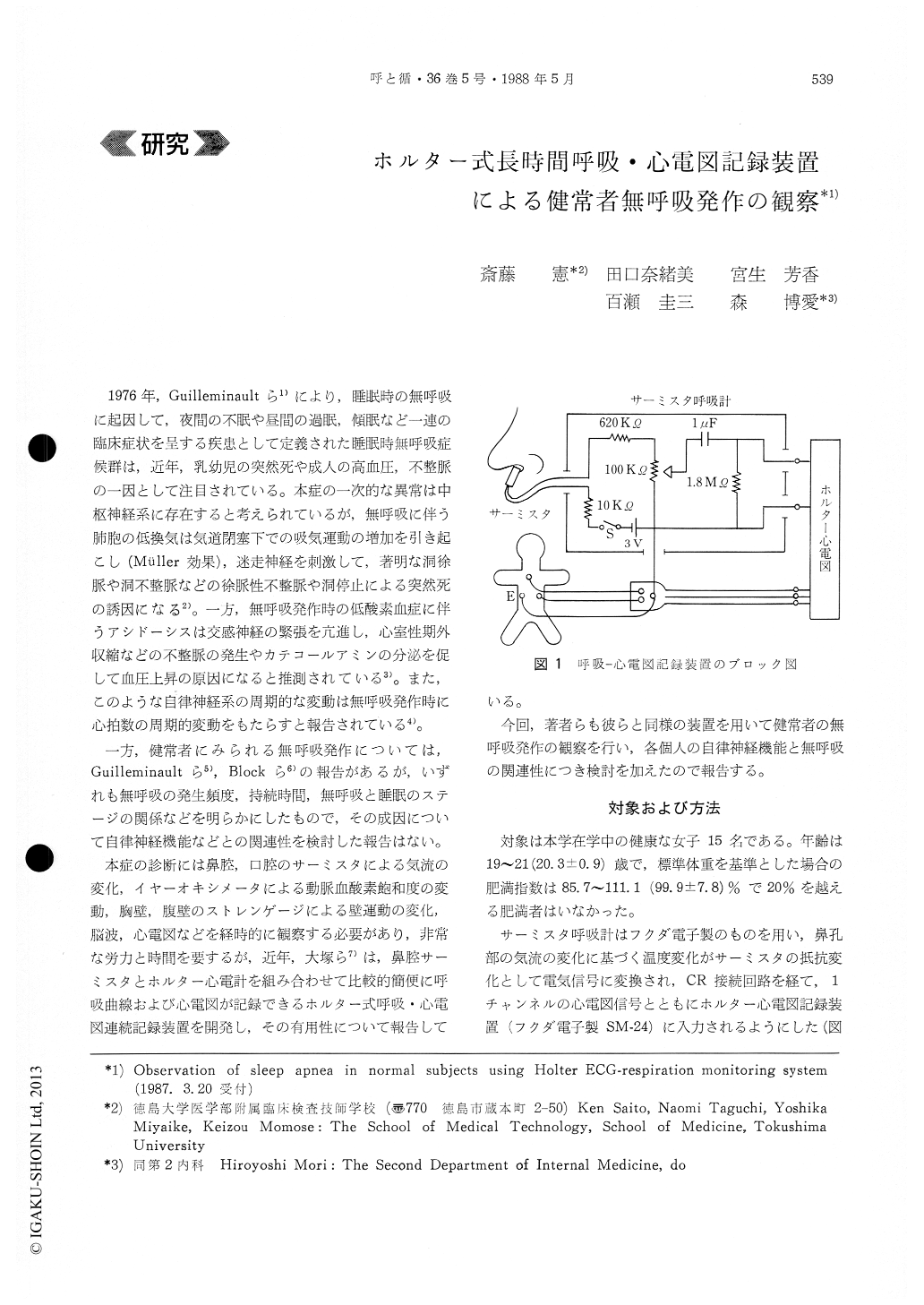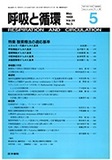Japanese
English
- 有料閲覧
- Abstract 文献概要
- 1ページ目 Look Inside
1976年,Guilleminaultら1)により,睡眠時の無呼吸に起因して,夜間の不眠や昼間の過眠,傾眠など一連の臨床症状を呈する疾患として定義された睡眠時無呼吸症候群は,近年,乳幼児の突然死や成人の高血圧,不整脈の一因として注目されている。本症の一次的な異常は中枢神経系に存在すると考えられているが,無呼吸に伴う肺胞の低換気は気道閉塞下での吸気運動の増加を引き起こし(Müller効果),迷走神経を刺激して,著明な洞徐脈や洞不整脈などの徐脈性不整脈や洞停止による突然死の誘因になる2)。一方,無呼吸発作時の低酸素血症に伴うアシドーシスは交感神経の緊張を亢進し,心室性期外収縮などの不整脈の発生やカテコールアミンの分泌を促して血圧上昇の原因になると推測されている3)。また,このような自律神経系の周期的な変動は無呼吸発作時に心拍数の周期的変動をもたらすと報告されている4)。
一方,健常者にみられる無呼吸発作については,Guilleminaultら5),Blockら6)の報告があるが,いずれも無呼吸の発生頻度,持続時間,無呼吸と睡眠のステージの関係などを明らかにしたもので,その成因について自律神経機能などとの関連性を検討した報告はない。
ECG-respiration recordings were obtained in 15 normal students (all females, ranging age from 19 to 21 years) using Holter ECG-respiration monitoring system. Apnea was noted when flow ceased in the nose for 10 seconds or longer.
Sleep time averaged 422±60 minutes (mean±SD) and 39 episodes of apnea were recognized in 12 subjects during sleep. The mean number of apneic episodes was 2.6 (range 0~12) per night per subject and 10 of 12 subjects (83%) had only one to four episodes. The mean duration of episodes was 13.5 seconds (range 10.2~23.8) and most of the episodes (97%) lasted for less than 20 seconds. There was a moderate positive correlation (r=0.72, p <0.01) between the maximal duration of apnea and the frequency of that in each subject.
The incidence of apnea exhibited a peak at 2-3 a. m. and then gradually reduced.
There was no relationship between the number or duration of apneic episodes and the average autonomic nerve function in each subject but the QTc interval changes tended to precede the frequency of apneic episodes.
These result suggest that the circadian variation of autonomic activity may be responsible for the occurrence of the apneic episodes in normal subjects.

Copyright © 1988, Igaku-Shoin Ltd. All rights reserved.


